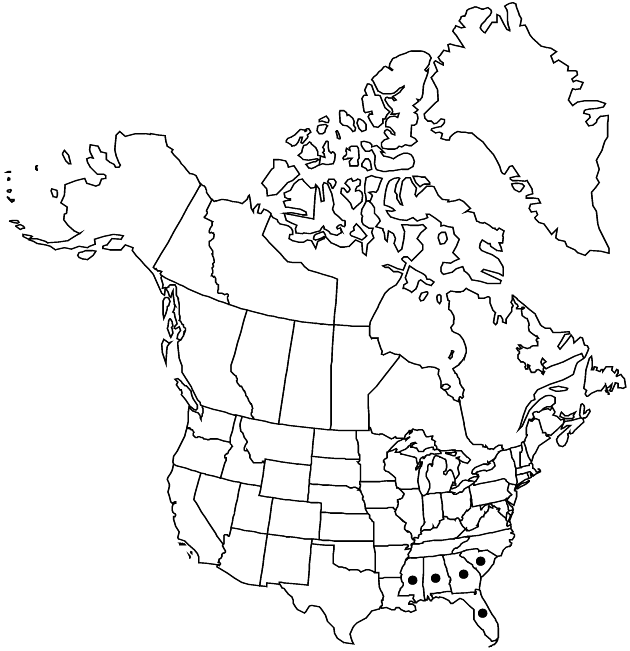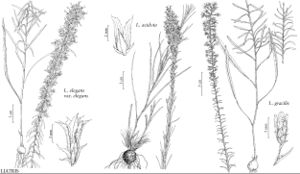Liatris gracilis
Fl. Amer. Sept. 2: 508. 1813.
Plants 20–100 cm. Corms globose to subglobose. Stems puberulent to piloso or strigoso-puberulent. Leaves: basal and proximal cauline 1-nerved, usually linear to linear-oblanceolate or oblanceolate, sometimes narrowly spatulate, 50–150 × 2–8 (–10) mm, gradually or abruptly reduced on distal 1/2–1/3 of stems, essentially glabrous (proximal margins ciliate). Heads in loose, racemiform arrays. Peduncles 0 or (usually straight, stiffly spreading to ascending) 2–10 (–12) mm. Involucres cylindro-campanulate, (4–) 4.5–6 (–7) × 3–4 (–5) mm. Phyllaries in 3 (–4) series, (green to purple) ovate to oblong, strongly to weakly unequal, sparsely puberulent, margins with hyaline borders, ciliolate, apices rounded to truncate. Florets 3–6 (–9); corolla-tubes pilose inside. Cypselae 3–3.5 mm; pappi: lengths ± equaling corollas, bristles barbellate. 2n = 20.
Phenology: Flowering (Jul–)Aug–Oct(–Nov).
Habitat: Longleaf pine, slash pine, palmetto-scrub oak, turkey oak-bluejack oak, sand scrub, sand ridges, uplands, boggy flatwoods, sandy peat, fencerows, roadsides, woodland edges
Elevation: 10–50 m
Distribution

Ala., Fla., Ga., Miss., S.C.
Discussion
Plants of Liatris gracilis from the panhandle of Florida and the southern tier of Alabama counties tend to have sharply acute phyllaries; intermediates are often encountered.
Selected References
None.
Lower Taxa
"barbellate" is not a number."fine" is not a number.
